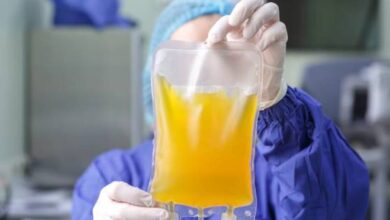Top Benefits of Miradry Treatment
Does excessive sweating interfere with your daily program and make you feel uncomfortable? You may need more than just taking showers and using deodorants to get through the day. If you have such a problem, have no more worries, as Alpharetta Miradry will help you eliminate excessive sweating through Miradry treatment.
Miradry uses microwave energy to destroy the sweat gland at the armpit, which causes a permanent stop of excessive sweating. The process distributes microwave energy, thereby cooling the skin and preventing it from thermal injury. Below are the benefits of miradry treatment.
Permanent Results
Clients enjoy long-lasting results when it comes to excessive sweating after miradry treatment. This is because the sweat glands that cause excessive sweating are permanently eliminated by thermal energy. The process has been proven effective, and results are realized immediately after the treatment.
When you have miradry, you will not need to look for alternative remedies that are merely short-term fixes. There are more worries to cater to in this life, but excessive sweat should not be one of them with the help of Miradry treatment.
Miradry Is Not Invasive
Miradry treatment uses thermal energy through a device administered to the skin. The thermal energy eliminates the sweat glands leading to a permanent stop of excessive sweating.
The treatment is administered quickly and easily, making it ideal for people who want to avoid surgery. It is completely non-surgical; therefore, clients feel safe and comfortable during the treatment.
Decreased Odor
The treatment addresses odor by eliminating odor glands at the armpit. The elimination of odor should be noticeably similar to that of sweat.
Sweat occurs naturally because of normal body functioning. However, experiencing excessive sweat makes you spend a lot of time thinking about how to erase the odor. Miradry has additional benefits as it addresses the root cause of odor which is excessive sweating, by permanently eliminating the sweat glands.
The Results Are Quick
Miradry treatment is quick and predictable results are seen immediately after the treatment. Although clients react differently to the treatment, it is common to all that no underarm sweat is seen immediately after it.
Most of the clients require single treatment only. If the client is not satisfied with the results, a second treatment is done three months after the first one to achieve the ideal results. This makes Miradry economical since a maximum of two treatments are required for clients to heal fully.
No Downtime Is Needed
It can be a big deal for busy people to create time for recovery. Thankfully, miradry requires no recovery time, and clients can resume their activities immediately after the treatment. This is because it has no severe side effects that require rest.
After the miradry treatment, you will gain the confidence to face embarrassing situations. For instance, in an interview, when the interviewer sees you sweat, it makes you more nervous. Trying to hide your armpits distracts you, and you may lose your job.
Though you may be nervous, it would be easier to put on your game face and keep your composure with fewer thoughts in your mind.




